EUANFLOW, the choreographer and video director responsible for the choreography of famous groups like Itzy, Twice, and Niziu, is someone whose name even those not well-versed in K-pop may have heard.
Having operated a dance studio (ALiEN Studio) in Korea for nearly 10 years, he has been expanding into Japan since 2022. EUANFLOW is involved not only in choreography but also in the production of content itself as a director. Why did he choose the path of a choreographer and director instead of just being a dancer?
And what are his visions and thoughts regarding his expansion into Japan? In this interview, SKOOTA spoke with him in Korean, with interpreter Shin Wuis, to hear his “raw thoughts.”
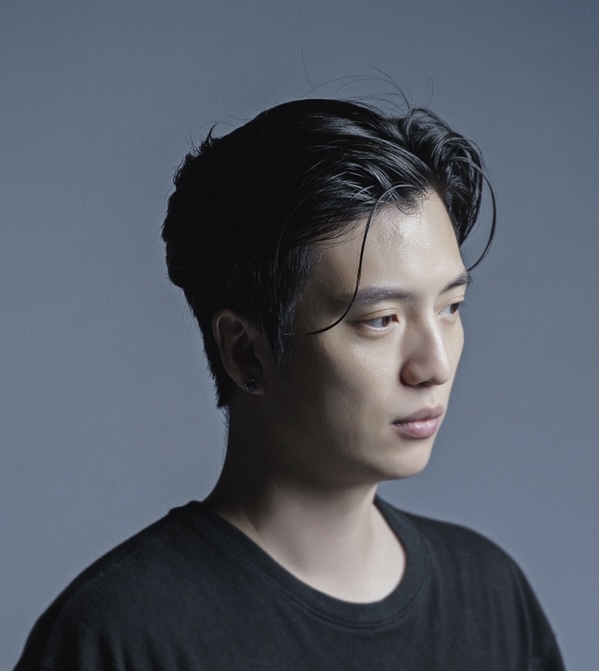
Interviewee: EUANFLOW
Active as a professional dancer for 25 years. Established ALiEN DANCE STUDIO in 2016 and serves as its representative.
■WORK
・NiziU – Take A Picture, ASOBO
・TWICE – Perfect World, Fake&True etc.
・ITZY – Dalla Dalla
・PRISTIN V – Spotlight
・gugudan – Be My Self, Not That Type
Others
The Dance Trend That Changed a Quiet Bookworm: “I Never Thought I’d Be on TV”

[blogcard url=”https://www.aliendancestudio.com/”]
――Before we start the interview, could you please introduce yourself for those who may be hearing your name for the first time?
EUANFLOW: Nice to meet you, I am EUANFLOW, a professional dancer who has been active in Korea for 25 years. I have been running a dance company called ALiEN for 9 years in Korea. I would like to connect Korean and Japanese cultures and produce amazing artists in Japan, just as I have done so far. Thank you for having me.
――SKOOTA has spoken with various creators so far, but this is the first time we are interviewing someone like you. First, could you tell us what motivated you to start dancing?
EUANFLOW: When I was in the third grade of elementary school, artists like Hyun Jin-young and Seo Taiji appeared on TV. I thought it looked interesting, so I started imitating them as a hobby, and I enjoyed it.
Before that, I was a quiet child who loved reading books and studying hard. But after I started dancing, I focused almost entirely on that. I danced as a hobby until high school, but I never thought I would appear on TV through dance.
One day, a friend who was learning dance with me passed an audition for a professional dance team during winter break. I thought, “If someone who learned from me can pass, then I can do it too,” so I auditioned next and joined that team.
――At that time (early 1990s), it was the heyday of dance singers, right? Before you were exposed to dance through the media like TV, you were a quiet child who loved reading books.
EUANFLOW: Yes, I was a very quiet child (laughs). I liked games, but I read a lot more books.
――After you started dancing, how did those around you react?
EUANFLOW: Actually, my relatives expected me to become a great person in the future because I had been reading books since I was little. They thought I might become a judge or prosecutor. But after I started dancing, I found studying boring and even said, “I’m going to quit high school.” I hadn’t studied much during middle school because I was focused on dance, so I thought it was impossible to study once I entered high school. Then all my relatives told me, “You have to graduate high school!”
At that time, when the PC-286 and 386 were released, I thought, “Then I want to become a programmer,” and I entered a high school in that field. But I met a friend who taught dance in the dance club at that high school (laughs). That was the beginning.
――Even now, quitting high school is generally not socially accepted in Korea, but it must have been even stricter back then.
EUANFLOW: It might have been.
A funny episode is that during middle school, I hated studying so much that I would hide a Japanese manga in the middle of my textbook and read it (laughs).
Shin Wuis: Do you remember what you were reading back then?
EUANFLOW: Well, it was probably “ONE PIECE” or “Shonan Junai Gumi.” Or maybe “Dragon Ball.” At that time in Korea, there was a trend of rental shops called “manhwa bang” that lent out comic books. I mentioned that I loved reading, right? I read almost all the comics available at the manhwa bang I frequented.
During middle school, I hated studying so much that I would hide a comic book in the middle of my textbook, yet when I entered high school, I lacked the confidence to do “night self-study.” So, that led to the situation I mentioned earlier.
“Night self-study”: A system in Korean high schools where students are made to study in classrooms or separate spaces after regular classes. Until the early 2010s, many schools forced participation. (Note)
――So, you were exposed to Japanese culture from a young age?
EUANFLOW: Yes, of course, even now. Japanese manga was very popular in Korea back then, and in terms of animation, it was number one in the world, so it would be strange not to be exposed to it. I think there were hardly any people my age who didn’t read Japanese manga.
Shin Wuis: It’s like the current K-pop and Korean dramas.
EUANFLOW: Yes, I think so.
The Limits Felt After Joining a Professional Team and the New Goals Found: “A New World Opened Up”
――For those who may not be familiar with this field, what do you think is the difference between a dancer and a choreographer? Some may not even know the meaning of “choreographer.” I would like to hear how you transitioned from being a dancer to a choreographer.
EUANFLOW: I think it would be easier to understand if I start from my childhood.
When I was 18 in Korean age, or 17 in Japan, I joined a professional team called “ING,” which was very popular in Korea at the time. I had been dancing since I was young and only danced with friends, so I thought I was really good. But when I joined that team, it was like a new world opened up, and I realized how much of a frog in a well I was.
The most surprising thing was watching the team leader create choreography and being shocked by how they could create such great choreography. So, my first goal after joining the professional team was to become a choreographer, not to dance on stage.
I started to take an interest in choreography earlier than others, and perhaps it was influenced by my love for reading books from a young age. Instead of just watching choreography, I would think, “How can I get better?” or “Why is that person so good?” I would observe people creating different choreographies for the same song and think, “Why does this person look cooler?” or “Why does this person’s part feel better?” This kind of exploration has been a foundation for me since childhood.
To explain the difference between a dancer and a choreographer, a dancer is, as the word suggests, “someone who dances,” and I believe this is the first step in a dance career. After a dancer comes a choreographer, which requires a different set of skills unrelated to how well one can dance. Just because someone is a choreographer doesn’t mean they can dance better than a dancer, but one must have a sufficient understanding and experience of the dance genre and culture to become a choreographer. Therefore, I see choreography as the next step after being a dancer, and I believe directing is the step above that.
If a choreographer is “someone who creates movements,” then a director is like a “supervisor” who arranges, modifies, and fine-tunes the created movements into a complete work. Personally, I think this is the next step after being a choreographer.
Creating movements can be done if one has danced, but whether the created choreography is good or bad, or whether it can entertain people, cannot be determined without having experience creating choreography. By putting one’s work on stage and teaching others to dance it, one finally develops the ability to discern these aspects.
Therefore, I believe that one cannot become a director without sufficient experience as a choreographer. This is the order of the career path I envision, or perhaps the order of levels?
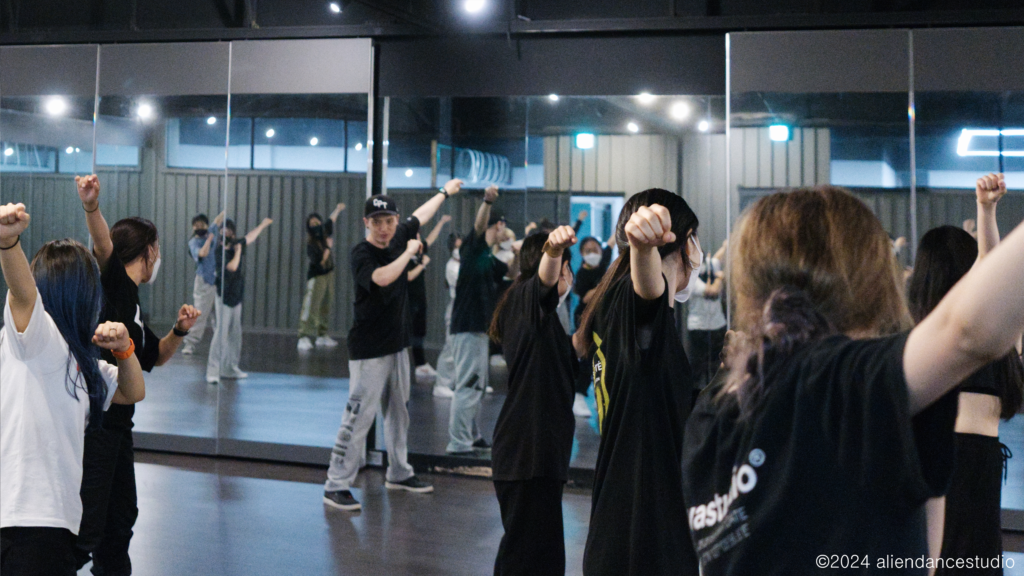
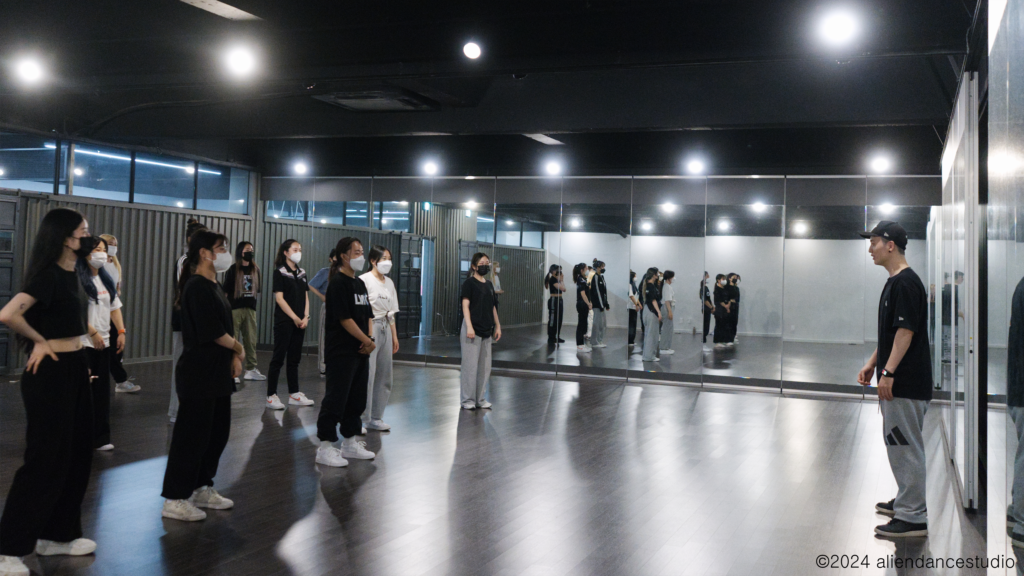
――That was a very easy-to-understand explanation for anyone. By the way, after hearing this, I’m most curious about how you usually come up with choreography. From a general perspective, where do you usually get ideas or hints for movements?
EUANFLOW: First, what I personally consider most important is whether it matches the “atmosphere of the song,” and I think everyone feels the same way. I consider whether I can create a composition that fits the concept, atmosphere, and message of the song as the first step. However, I believe that a choreographer’s competitiveness lies in whether they can create “movements that others haven’t done” or “movements that haven’t been created.”
In my case, this might sound funny to everyone (laughs). In any artistic field, references are necessary, right? For example, a music video director would refer to other music videos, and a film director would refer to other films. In my case, I refer to the movements of those who are not good at dancing.
Moreover, I also refer to how to dance to music that is completely unrelated to K-pop or pop music. Having danced for a long time, I know most of the dance movements that have been popular so far. Even if I try to reference other people’s dances, there isn’t much new discovery because it doesn’t differ much from what I already have in my head.
However, the movements of those who are not good at dancing express the same movements in a completely different way, or they put strength into different muscles and body parts, making it look very fresh. Of course, I review that and reconstruct it to make it look cool using my own abilities and senses. I do a lot of that kind of work.
Additionally, I am interested in other artistic works, often visiting exhibitions and galleries, and I enjoy accumulating diverse cultural experiences. I also go to jazz live performances.
By observing other genres of art, I can encounter poses, shapes, or atmospheres that I wouldn’t normally come across in dance. Especially in spatial exhibitions, I think about what kind of shape would be good if I were to dance in such a place. While thinking this way, I start to imagine differently than just listening to the music. This is how new movements are created.
――In terms of animation studios, it feels similar to referencing amateur illustrations or children’s doodles as references.
EUANFLOW: That might be the case.
――Now that you’ve talked about your work as a director, when do you feel the most fulfillment and joy in your work?
EUANFLOW: I think the moment I see a piece I created and think it looks cool is one of those moments. On the other hand, there are times when I don’t like something, but it gets a lot of praise from many people. In those moments, I feel more of a sense of accomplishment than happiness. It’s like, “But I did something good” (laughs).
Also, as I mentioned earlier, I run a company called ALiEN. This is primarily a dance company where I create choreography based on concepts I have developed.
Therefore, while creating choreography for singers, I also create many of my own works. Thus, I have been thinking not only about the process of creating movements suitable for the music but also about “If I were to release this as a video, what kind of costumes and styles of choreography would make it a better piece?” I find fulfillment in having many people enjoy such works.
There are times when something I am very satisfied with does not receive the expected response, and there are times when something I thought was too easy to create becomes very popular. I feel satisfied with both sides now. There is satisfaction in my own contentment, as well as satisfaction in being liked by everyone.
――It seems that you are more of a “director” overseeing the content itself rather than just creating choreography. While each choreography is certainly important, you seem to always consider how it will be perceived when it becomes a video.
EUANFLOW: The dance videos I created are ones I filmed and edited myself. I started doing that relatively early on. Of course, it can’t be compared to music videos or films, but at least in terms of filming and editing dance videos, I believe I am recognized in Korea. I’ve heard that other companies reference my videos.
What is Needed for Stable Growth… “Dancers Should Have the Abilities of Athletes and Be Artists Who Manage Themselves”
――Based on what we’ve discussed so far, I would like to shift to a lighter question. In an interview, when you introduced your company’s facilities, the gym inside was very impressive. Do you often do strength training before practice or lessons?
EUANFLOW: (laughs) To be honest, since I started running the company, I have focused more on business and content production than on managing my body. So, the gym facility mentioned earlier is not used as much compared to before. I do simple stretches for about 5 to 10 minutes regularly.
Since we’re on the topic of training, I should mention that I have been involved in sports long before I learned dance skills and fundamentals. When I build muscle and strengthen my body, it seems like I become better at dancing even without practicing. Or it becomes easier to dance. Having experienced that, when I teach lessons to professional teams or aspiring professionals, I always make them do strength training. That curriculum has been established, so I incorporated it when I started the company.
As a result, the dancers and students in my company initially found it very challenging. They would say things like, “I don’t want to do strength training” or “I’m tired,” but those who managed to stick with it until the end were able to grow steadily. If physical fitness doesn’t keep up, there are limits to how much one can grow, no matter how much they are taught or practice.


In fact, even without practicing dance individually, just doing physical training can lead to growth. Because of that experience, I started with bodyweight training and eventually introduced gym facilities.
――It’s impressive that this is not just about the curriculum but is based on your own experiences.
EUANFLOW: Thank you.
When I train my members, I persuade them with the phrase, “Dancers should have the abilities of athletes and be artists who manage themselves.” This is because dancers are not athletes aiming for physical records; they are artists expressing music and emotions through their artistic inspiration and senses. Nevertheless, to realize the expression they desire, physical elements are very important, which is why I say that.
――The term “persuasion” is interesting (laughs).
EUANFLOW: Well, they look like they’re struggling, so I have to motivate them somehow. However, that motivation ultimately comes from within themselves, so I just expressed what I felt as someone in a teaching position.
What I Questioned About Myself 10 Years Ago When I Fell into a Rut… “Nevertheless”
――EUAN, you are famous for naming your created choreography “Euanflow Choreography.” Is there a particular piece that still stands out to you?
EUANFLOW: I have several favorite works. Among them, there is a piece that many people have come to love, which may have led to the current ALiEN brand.
That is the choreography for Tinashe’s “2 ON.” Many people praised that choreography. It was a successful application of the concepts and theories of choreography that I established myself, and it became more popular than I expected, so it remains memorable.
In addition to choreography, another piece that comes to mind is the choreography for the song “Millennia” on my YouTube channel. The artist is Pixel Terror, who is probably not very famous in Korea. I struggled a lot with the concept and costumes for that piece, and I believe that this style might be the first of its kind globally.
Of course, I can’t say it’s incredibly innovative or wonderful, but in terms of the various elements mixed together to create a single piece, I thought, “This is probably the only content that can provide such stimulation with this combination.”
EUANFLOW: To explain briefly, as I mentioned in the video comments, I aimed for a feeling of “statues in an exhibition moving.” Usually, when we think of dance, we imagine it as passionate and energetic, but in this case, the movements are slow and seem to lack sweat, yet they exude a cool atmosphere (laughs). That’s why the costumes included skirts and long dresses, and I also wore gloves. The hat was styled in a Vogue-like manner. If you watch it, you’ll see that the dance appears very static. Of course, it looks static, but it’s actually dynamic.
――Is it similar to pantomime?
EUANFLOW: No, I think of it more as a model not being particularly good at dancing. If a model could dance well, I imagine it would look something like this—dancing while posing without much movement.
――I think there is a significant difference between being static and appearing static. This connects back to the earlier discussion about where inspiration comes from. It raises the question of “What kind of movements would a model make while dancing?” However, the actual movements of a model would likely differ entirely from those of a dancer, and you transformed those into movements you found appealing.
EUANFLOW: Yes. I was thinking about what style would be appropriate if a model were to dance well.
――I find it fascinating how this connects back to your earlier answer about how you come up with choreography. It seems to be about taking inspiration and making it your own, while also utilizing it in a way that you believe is better.
EUANFLOW: Hearing your comments reminds me of something. Speaking of inspiration, about 10 years ago, I went through a period of arrogance. What I mean is that after studying dance for a long time, I thought, “I have mastered dance,” and I didn’t need to look at other dancers’ work. I spent about 2-3 years without engaging with what others were doing.
However, after that period, I realized that the world of dance had developed significantly. The point of that development was the diversification of “arm movements,” which I had previously underestimated.
In the past, I thought that from a dancer’s perspective, “arm movements are the most basic.” Therefore, I believed that if I wanted to improve, I should focus on mastering higher-level movements like legs or body movements. I thought arm movements were too simple and that there was nothing left to study. But during those 2-3 years, arm movements began to develop through research, and I was amazed at the new possibilities.
After regretting that period, I decided to question myself whenever I wanted to gain inspiration.
In the past, I would have thought, “I know everything that can be done with arms,” but now I think, “Nevertheless, I must create cool movements with my arms.” For example, if I were to think, “What if I danced jazz to a hip-hop song?” in the past, I would have said, “That’s impossible.” But now, I think, “Nevertheless, if I were to create it, what could I do?” This kind of thinking has been very helpful in generating new concepts and choreography.
――It sounds like a rut, doesn’t it? The discussion you just had is something many creators might fall into, and the idea of “nevertheless” is very valuable advice.
EUANFLOW: This is based on my experience.
The Education System Spreading Worldwide with K-pop… “Even if the Same System is Introduced, It Cannot Be Said That the Same Results Will Follow”
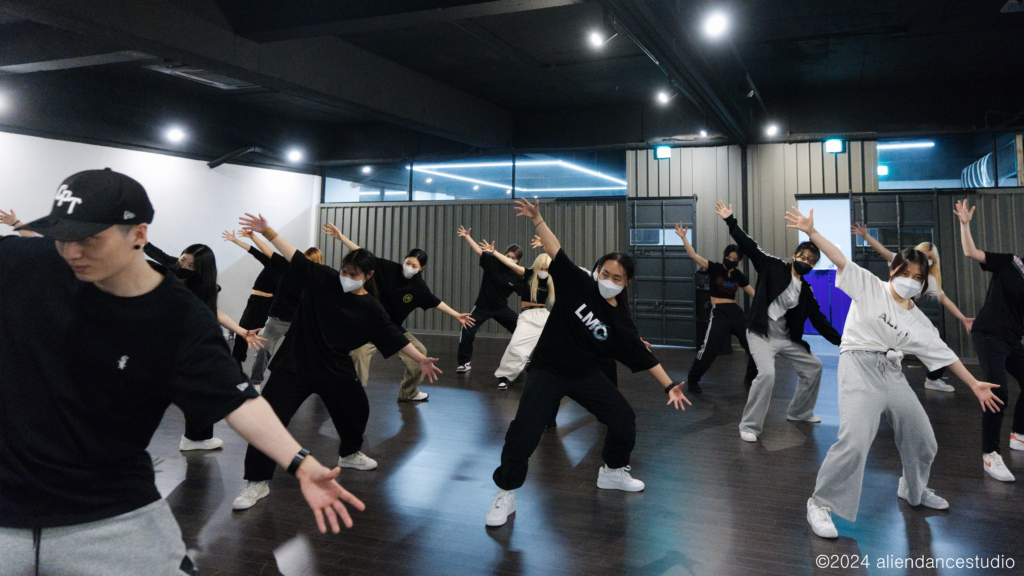
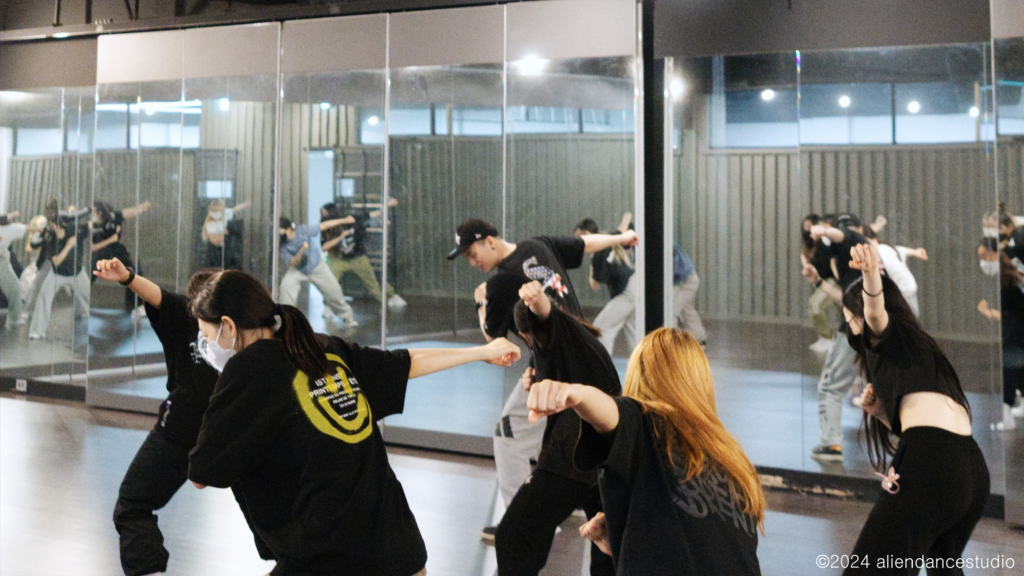
――This is just from the perspective of the Japanese entertainment industry, but it seems that there is a trend in the Korean entertainment industry to “nurture and bring forth new talents.” With the expansion of entertainment, it seems that Korean educational culture is also being introduced. What are your thoughts on this from your position at the forefront of the industry?
EUANFLOW: I see. I haven’t thought about that, so I’m not sure how to explain it…
From my personal perspective, I might say that the fundamental reason for the popularity of K-pop and the appeal of K-pop music, dance, and music videos lies in the unique educational methods that do not exist in other countries. For instance, if we say, “Koreans have a different innate ‘talent’ compared to people from other countries,” then such an educational culture might not have emerged. Of course, while talent is important for the emergence of K-pop, what is more crucial is the existence of a “systematic educational method and practice,” that is, the “production process.”
This is a discussion about the system, but I believe that “this system can be implemented in any country.”
――I see. While there are various elements that make up K-pop, at its core, there is a unique K-pop system. Therefore, when K-pop is introduced, the system comes along with it.
EUANFLOW: Yes, but while the system can be implemented in any country, I believe there will be differences in the results that come from it. The biggest reason for that is the differences in culture and mindset. Even if the same educational methods are introduced, it cannot be said that the same results will follow during the educational period.
As you may know, Korea is a highly competitive country, so if one cannot compete, they cannot pass the audition or selection process for members. This educational system is fundamentally impossible to accept unless one becomes accustomed to and naturally accepts that competition. Of course, if there are no time constraints, it would be a different story. However, everyone must practice and debut within a few years while they are still young.
There are significant differences in the culture and mindset that each country fundamentally possesses, so even if the same system is introduced, it is difficult to achieve the same results. However, over time, as young people see the talents that emerge from that system, they may start to think, “This is how I can debut,” and the system may gradually become established. That’s what I think.
――Now that you’ve mentioned this, I have to ask: What do you think about the compatibility of Japanese culture with the K-pop system, especially as you expand into Japan?
EUANFLOW: From my experience, there aren’t many countries where people can concentrate and practice at the level of Koreans. However, at least the trainees I have met in Japan have worked just as hard as Koreans. I was very surprised by that. There aren’t many people who can work that hard.
There may be differences in mindset, but at least the trainees I have met all love K-pop. They have watched K-pop audition programs and have some understanding of how K-pop idols are born. So, perhaps they naturally accepted it, but everyone practiced using their personal time and worked hard, with many putting their lives on the line. Therefore, I believe that if this system is introduced in Japan, it will work very well.
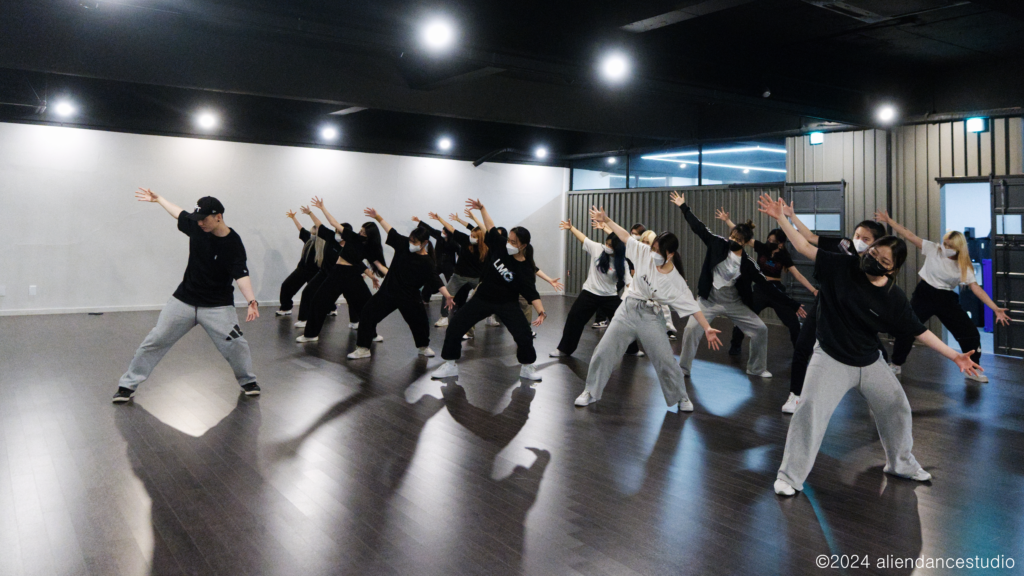
Shin Wuis: There is an idol market in the UK and Japan, which was ahead of Korea by 10 to 20 years, but I wonder why the most efficient output system was born in Korea in this era. Was it the private education system like cram schools and the passion for education that systematized it, or was it the passion of the people for entertainment that created competition, leading to a stronger system? In other words, did an excellent system exist first, leading to the current system, or are we now following a system that produced excellent stars and artists?
EUANFLOW: Ah, when you ask that, there are many aspects to touch upon. For now, I think it’s a “co-evolution.”
It wasn’t that the private education was excellent first, leading to talented individuals; nor was it that the talent itself was so outstanding that private education followed. The culture of idols itself became an object of admiration for young people, and the number of those dreaming of it increased through TV. As people saw the success of many entertainment companies, many new companies began to emerge, leading to competition among them.
In that process, more talents, including staff, gathered. Initially, there were no “cram schools” that taught choreography, created songs, and trained trainees to develop idols. However, as this entertainment culture emerged in Korea, competition repeated itself, and in that process, the abilities of the staff improved, leading to the current prosperity of K-pop.
Additionally, regarding private education, there are many places to learn dance in Japan, as far as I know. Personally, I thought that the culture of learning dance was ahead in Japan, and I still believe so. However, the reason for the resulting gap is that the entertainment culture in Korea has been placed in a context of intense competition and music programs. In other words, I think there was an environment where one could encounter many artists.
This is not just one factor but a result of various intertwined structures. I believe that the environmental factors that allowed K-pop culture to develop more than in other countries lie in the number of music programs.
For example, when a music video is released, if someone who likes that artist wants to meet them or listen to their song, in other countries, there are few opportunities to engage with content other than the music video. However, in Korea, there are 4 to 5 music programs aired weekly, and viewers can participate in the studio, making it easy and diverse to consume content. Because of this environment, choreography becomes more innovative, and the same goes for song creation and artist selection. For fans, the increase in opportunities to enjoy such content creates a chance for both the supply and demand sides to connect. That’s why I think it developed more quickly.
The Future Possibilities Born from K-pop X Animation Collaboration… “If Possible, I Would Like to Try”


――As time is running out, I think this will be the last question. Since you have worked as a choreographer in the K-pop industry, you must have encountered various genres. Just like now, you have connections with the animation industry.
EUANFLOW: Yes.
――Based on your experiences, how have collaborations with different genres occurred for you?
EUANFLOW: I think it would be better to incorporate what I usually think about into this. Choreography, in other words, choreography, must ultimately be consumed alongside music. Therefore, the premise is that the music itself is something that the public consumes, and I believe that currently, the music that can be showcased best is K-pop. However, having been in this position and done a lot of that work, I have a human nature that seeks something new (laughs). That’s just who I am. So personally, I would like to collaborate with various forms of art.
Because, as I mentioned earlier, I love going to exhibitions, and I feel like I’ve exhausted the consumption of dance in pop culture. Therefore, intertwining dance with art is something I have not tried before, or rather, I feel it hasn’t reached the public. Dance connected to art has only been close to contemporary dance. However, I believe there is a reason why street dance and choreography used in K-pop are loved by the public. I want to utilize those “beloved elements” and try collaborating with the art world. I have ideas for that.
Animation can also be sufficiently collaborated with if approached creatively. While it is certainly possible to translate dance into animation, it is also possible to connect dance by intertwining artistic aspects with animation. If there are people in this industry who need me, I would love to try it. Although I have been trying to do this for a long time, it is a challenging topic, and without comprehensive support and funding, it is difficult. There are issues that have prevented it from materializing, but I do have ideas.
In any case, I have been involved in various projects, and I have not only created choreography but also innovated through references in terms of location, costumes, and makeup. Based on those experiences, I believe there are many opportunities to collaborate with artistic fields, including animation. It should not be something that only satisfies the creators but something that provides fresh stimulation to many people around the world.
――I look forward to seeing how EUAN will continue to work in Korea, Japan, and around the world.
EUANFLOW: Thank you. I look forward to it as well.
――Thank you very much. This concludes our interview.
●Interview Assistance: Shin Wuis
(NHK WORLD Announcer, CEO of Wiskool Co., Ltd.)
●Interviewer: Park Juhyun (SKOOTA Editorial Department)
